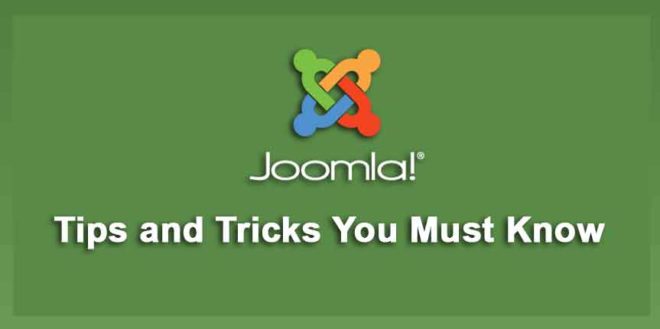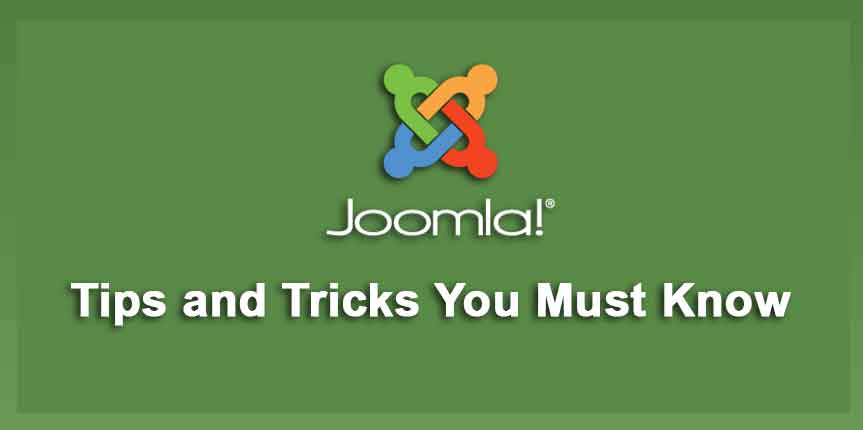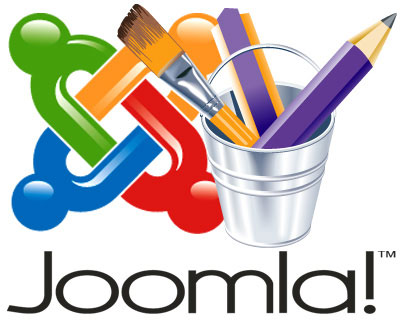Joomla Tips and Tricks You Must Know
Joomla is the popular CMS which aids you produce site easily. If you use Joomla as long enough to state you know whatever about Joomla, you must have reservation. Today I’m going to find and also gather some suggestions and also tricks from several resources before and hope you could discover some helpful pointers and also tricks that you haven’t understood before.
The Simplest Way to Install Once More
After setup, Joomla asks you to delete the folder/ installation. If needed, to reprise a setup from the ground up. You’ll simply have to delete configuration.php documents as well as rename your folder/ installation to revitalize a nearly new Joomla. This can be useful if you are evaluating in your area as well as want to conserve time by” reformatting” your Joomla swiftly between each test.
Find Admin Passwords If You Lost
You could include behind the website URL:” index.php?option= com_users & view= reset “. The website will certainly ask you the e-mail address of the administrator.
However ir your admin password or the admin account has vanished altogether? It is not usual so you have to examine the safety and security. Nevertheless, you can undergo the database and inject this inquiry:
REPLACE INTO ‘jos_users’ (‘ id’, ‘name’, ‘username’, ’email’, ‘password’, ‘usertype’, ‘block’, ‘sendEmail’, ‘gid’, ‘registerDate’, ‘lastvisitDate’, ‘activation’, ‘params’) WORTHS (62, ‘Manager’, ‘admin’,’ admin@toto.com’, ‘5f4dcc3b5aa765d61d8327deb882cf99’, ‘Super Manager’, 0, 1, 25, ‘2005-11-22 00:31:11’, ‘2005-11-26 22:05:38’, “, ‘editor =’-RRB-;
Make certain to change in your question jos _ by your suffix table and also the ideal e-mail address, you could additionally transform the names administrator and also admin.
You have, according to this instance, created a super manager account with the login admin/password.
Add Post Title To Read More Links
Some people intend to add the post title to the learn more web link. To attain this you could set that on your menu item or in Write-up management options. By default the menu item setups indicate the Post management Options setups by “Usage Worldwide”.
Set it on your menu item:
- Go to Menu management
- Edit the menu item
- Go to tab Advanced Options
- Establish “Show readmore” to Show
- Set “Show title with readmore” to Show
Set it on Post management Options:
- Go to Post management Options
- Most likely to tab Articles
- Establish “Show found out more” to Show
- Establish “Show title with found out more” to Show
Locating Modules Positions on Any Given Web Page
To obtain an aesthetic indicator of all module positions utilized on a page you could follow this procedure:-.
- In the management backend most likely to Expansions- > Layout Manager. Click on Options and set Preview Module Positions to made it possible for browse to the website web page you want to see the module settings for in your internet browser.
- Click into the LINK area in your internet browser.
- Try to find any type of “parameters” at the end of the LINK. These are separated from the main part of the URL by a question mark. As an example, in the URL http://mydomain.com/index.php?id=17, the “id= 17” is a parameter.
- If there are no specifications, append “? tp= 1” to the LINK and also press RETURN. As an example, http://mydomain.com/index.php?tp=1.
- If there are currently parameters in the LINK, append “& tp= 1” to the URL and press RETURN. For example, http://mydomain.com/index.php?id=17&tp=1.
- The module positions will certainly be described in red.
Linking To an Article from a Module.
The example over thinks that you have control over the LINK used for the web link. Nonetheless, in some cases, the web link is created instantly for you and for that reason you do not have the option of by hand transforming the Itemid of the URL. Examples of this include the most recent News and Many Popular modules, both which offer you links to articles automatically. In this circumstance, you can still control which modules display when you link to a write-up. Right here are 3 feasible techniques.
A) The most basic method is to designate modules to All menu items. That way they show up whatever. Yet you need to be OK with having the modules on every web page.
B) Another possibility is to use a concealed menu item with a Section or Category format. You can do this on a “covert” menu and not create a menu component for this “concealed” menu. If you do not have an article design for the article being connected to, Joomla will search for a “comparable” menu item and also utilize the components for that item. This additionally helps classification formats. There is a hierarchy for this, as complies with:
- Write-up Format.
- Classification Blog Layout.
- Category Listing Layout.
C) Note that, if you have the Breadcrumbs component allowed, these hidden menu items will show in the breadcrumbs. This suggests that an individual will be able to navigate to the concealed menu item (as an example, the section listing design) from the web link in the breadcrumbs
D) The sure way to fix this (but also one of the most work) is to create a separate menu item for each short article. This is one of the most job, yet it enables you to totally control the components displayed for each and every article.
Uninstalling an Extension.
If you desire to uninstall an extension on your Joomla site, after that adhere to these straightforward steps:.
- Select “Expansions” and afterwards “Extension Supervisor” from the dropdown menu.
- Select “Manage” on the left menu.
- Select the kind of extension you wish to uninstall. You will have the selection in between Parts, Info, Modules, Plugins, Languages as well as Templates.
- Discover the extension you desire to uninstall and check the checkbox to the left of the extension title.
- Press “Uninstall” on listed below the title “Extension Supervisor: Handle”.



